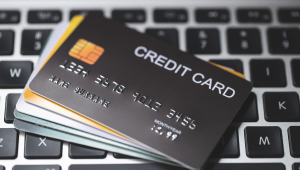
When seeking a Singapore loan, borrowers typically encounter two main types: secured and unsecured loans. Understanding the difference between them is crucial for making smart financial decisions and choosing the right option for your needs. Secured loans require collateral—like a car or property—and often come with lower interest rates due to the reduced risk for lenders. Unsecured loans, such as personal loans, do not require collateral but may have higher interest rates and stricter eligibility criteria.
Choosing the right loan depends on your financial goals, repayment ability, and risk tolerance. Whether you’re funding a renovation, handling medical bills, or consolidating debt, it’s essential to compare terms carefully.
To ensure you’re getting the most reliable and fair deal, consider borrowing from the best money lender in Singapore—someone licensed, transparent, and customer-focused. This guide breaks down the pros and cons of each loan type to help you borrow wisely and confidently.
1. Understanding the Basics
What is a Secured Loan?
A secured loan is a type of loan that requires the borrower to pledge an asset (commonly referred to as collateral) as security for the loan. The collateral could be property, a vehicle, or other valuable assets. If the borrower defaults on the repayment, the lender has the legal right to seize and sell the collateral to recover the outstanding debt.
Examples of secured loans in Singapore:
- Home mortgages (secured by the property being purchased)
- Car loans (secured by the vehicle itself)
- Pawnbroker loans
- Secured business loans
What is an Unsecured Loan?
In contrast, an unsecured loan does not require any form of collateral. The lender issues the loan based primarily on the borrower’s creditworthiness, income stability, and repayment history. Because the lender takes on more risk, interest rates tend to be higher.
Examples of unsecured loans in Singapore:
- Personal instalment loans
- Credit card debt
- Education loans (without guarantors or collateral)
- Lines of credit
Key Differences Between Secured and Unsecured Loans
| Feature | Secured Loan | Unsecured Loan |
|---|---|---|
| Collateral | Required | Not required |
| Interest Rates | Generally lower | Generally higher |
| Loan Amount | Typically higher | Usually lower |
| Risk to Borrower | Asset at risk if defaulted | No collateral, but credit score damaged if defaulted |
| Approval Criteria | May be easier to obtain with poor credit if asset is valuable | Requires good credit history |
| Repayment Terms | Longer repayment periods available | Shorter terms more common |
Pros and Cons of Each Loan Type
Advantages of Secured Loans
- Lower Interest Rates: Because of the reduced risk to lenders, secured loans generally offer more favourable interest rates.
- Higher Borrowing Limits: Lenders are more comfortable approving larger sums when backed by assets.
- Longer Tenure: These loans often come with extended repayment periods, making monthly payments more manageable.
Disadvantages of Secured Loans
- Asset Risk: Failing to repay the loan could result in the loss of valuable personal or business assets.
- Longer Approval Process: Valuation and verification of the asset can lengthen the time required to approve the loan.
Advantages of Unsecured Loans
- No Collateral Needed: This makes them accessible for individuals without significant assets.
- Faster Disbursement: Because there’s no need for asset valuation, these loans are typically processed and disbursed more quickly.
- Greater Flexibility: Unsecured loans can often be used for a variety of purposes, including medical bills, education, or debt consolidation.
Disadvantages of Unsecured Loans
- Higher Interest Rates: To offset risk, lenders charge more in interest.
- Lower Loan Amounts: Lenders often impose tighter caps on how much you can borrow.
- Stringent Credit Checks: These loans require a strong credit score and stable income.
Suitability: When to Choose Which?
When to Consider a Secured Loan
- Purchasing a high-value asset, such as a house or vehicle.
- You own a valuable asset and want access to a larger loan with a lower interest rate.
- Your credit score is less than ideal, but you have collateral to offset the risk.
Secured loans can be beneficial for long-term investments and financial commitments. For instance, a home loan not only provides you with housing but also builds equity in a long-term asset.
When to Consider an Unsecured Loan
- You need quick access to cash for emergencies or personal needs.
- You lack substantial assets to pledge as collateral.
- You have a strong credit history and want to avoid risking personal assets.
An unsecured personal loan might be ideal if you need to finance a wedding, medical treatment, or travel expenses, especially if the sum required is moderate and can be repaid within a few years.
Interest Rate Comparison in the Singapore Market (2025 Overview)
As of 2025, interest rates in Singapore for both loan types vary across banks and licensed moneylenders.
- Secured Home Loans: ~2.5% to 4.0% per annum (depending on SORA rates and loan tenure)
- Car Loans: ~2.28% to 3.5% per annum
- Unsecured Personal Loans (Banks): ~3.5% to 6.88% effective interest rate (EIR)
- Unsecured Loans (Licensed Moneylenders): Up to 4% per month, capped by the Ministry of Law
It’s important to use loan calculators and compare across lenders to understand the effective interest rates, especially since advertised rates can sometimes be misleading due to additional fees.
Legal Protections and Regulations in Singapore
The Monetary Authority of Singapore (MAS) and Ministry of Law oversee financial institutions and licensed moneylenders. They regulate the maximum interest rates, loan limits, and collection practices for both secured and unsecured lending.
Key borrower protections include:
- Caps on interest rates (especially for moneylenders)
- Clear disclosure of loan terms
- Debt repayment assistance schemes for those in financial distress
Borrowers are strongly advised to avoid unlicensed lenders, also known as loan sharks, as they operate outside the legal framework and may use abusive tactics.
Loan Application Process
For Secured Loans
- Submit Application: Include income proof, identification, and asset details.
- Asset Valuation: Lender assesses the value of the collateral.
- Approval and Offer: Upon assessment, a conditional offer is given.
- Disbursement: Funds are released upon signing the loan agreement.
For Unsecured Loans
- Submit Application: Often requires only NRIC, income proof, and credit report.
- Credit Assessment: The lender checks your credit score and debt servicing ratio.
- Approval: Quick turnaround—sometimes within 24 hours.
- Disbursement: Funds are transferred directly to your bank account.
Risks to Be Aware Of
Regardless of the type of loan, borrowing always comes with inherent risk.
- Over-leveraging: Taking on more debt than you can manage may result in default, credit damage, or bankruptcy.
- Hidden Fees: Processing charges, late payment penalties, and early repayment fees can increase total repayment cost.
- Loan Scams: Be vigilant. Always verify that a lender is listed in the Registry of Moneylenders on the Ministry of Law’s website.
Final Thoughts: Making the Right Choice
The decision between a secured and unsecured loan boils down to your financial goals, asset ownership, risk tolerance, and repayment capacity.
| Scenario | Recommended Loan Type |
|---|---|
| Buying a home or car | Secured Loan |
| Emergency medical bills | Unsecured Loan |
| Poor credit but owns property | Secured Loan |
| Short-term personal expense | Unsecured Loan |
| Starting a business with property as backup | Secured Business Loan |
Before committing to any loan, it’s advisable to:
- Review your current liabilities
- Understand the full cost of borrowing
- Use official comparison portals like MoneySense or bank websites
- Consult a licensed financial adviser if unsure
Conclusion

In Singapore’s dynamic financial landscape, both secured and unsecured loans serve vital purposes. A secured loan offers lower interest rates but puts assets at risk, while an unsecured loan provides fast access to funds but often at a higher cost. Choosing the right one requires a thoughtful evaluation of your financial standing and future obligations. With prudent planning and awareness of your options, loans can become powerful tools in achieving your financial aspirations rather than burdens.










